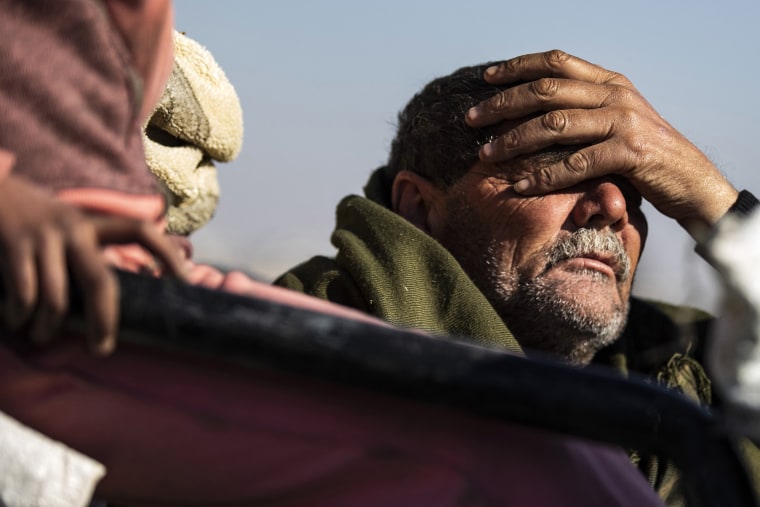With the balance of power in northern Syria swinging toward the rebels who toppled the Assad regime, U.S.-backed Kurdish forces and their ability to contain ISIS may now be under threat.
The Kurdish Syrian Democratic Forces (SDF) — which helped the U.S. beat back the Islamic State terrorist group and currently holds thousands of captured ISIS fighters — accepted a cease-fire Tuesday with the Turkey-backed Syrian National Army (SNA), ceding control of the northern city of Manbij, a Kurdish stronghold.
“We have reached a ceasefire agreement in Manbij with American mediation, to preserve the security and safety of civilians,” the SDF’s general commander, Mazloum Abdi, said Tuesday in a post on X. “Fighters … will be removed from the area as soon as possible. Our goal is to cease fire throughout Syria and enter into a political process for the future of the country.”
The takeover of Manbij, led by Hayat Tahrir al-Sham — or HTS, which has roots in extremist Islamist movements — reflects the rapidly shifting situation across Syria, including for Kurdish forces.
While Israel has taken the opportunity to destroy Syrian naval ships in the west, as well as buildings linked to chemical weapons outside Damascus, the fall of Assad and the rise of HTS could scarcely have gone better for the Turkish government of President Recep Tayyip Erdoğan.
Erdoğan is HTS’s key backer. He has long viewed the SDF as an extension of Turkey’s Kurdistan Workers Party (PKK) and designates both as terrorist organizations. And while Syria’s Kurds have, since 2011, largely defended their autonomy in the northeastern corner of Syria that borders Turkey and Iraq, the political winds have shifted against the SDF.

“The Kurds in Syria, after many years of autonomous rule, are in probably the most precarious and volatile environment since they developed those structures,” said Renad Mansour, a senior research fellow on the Middle East and North Africa program at the London-based think tank Chatham House.
Kurdish forces have made arrangements with several different groups over the past decade, Mansour told NBC News, but “this colossal change in Syria will see them have to renegotiate this, and probably negotiations will be through violence.”
It took U.S. mediation to broker an armistice between the SDF and the SNA, amid a visit from Army Gen. Erik Kurilla, head of U.S. Central Command, and before Secretary of State Anthony Blinken’s trip to Turkey.
“We’ve worked alongside the SDF for some time. That work continues,” Defense Secretary Lloyd Austin told reporters in Japan on Wednesday. “We have a good relationship with them, and I think it will remain.”

But the words of America’s incoming president will not have escaped the attention of the SDF leadership.
“Syria is a mess, but is not our friend,” President-elect Donald Trump said in a post on X last week, adding in all caps: “The United States should have nothing to do with it. This is not our fight. Let it play out. Do not get involved!”
The early signs from the incoming Trump administration are that there will be two schools of thought regarding Syria, Mansour said. “One camp recognizes the historic fight with the Kurds against ISIS … and of course the other camp — where Trump probably lands — is to try and move out of Syria,” he said.
There are thought to be thousands of ISIS fighters being held in prisons and internally displaced person camps monitored by Kurdish groups and U.S. forces in Syria’s northeast — an area that used to constitute part of the Islamic State’s territory.

If a second Trump administration were to pull out of Syria, it would leave Kurdish forces without a major international ally. HTS and its allies, meanwhile, have the backing of Turkey and Erdoğan, who on Monday welcomed ejection of “terrorists” from Manbij, according to Reuters.
There are already signals of further clashes. Kobani, to the northeast of Manbij, “remains at risk of war due to continuous provocations by Turkey and its jihadist mercenaries,” SDF media chief Farhad Shami told NBC News on Wednesday.

